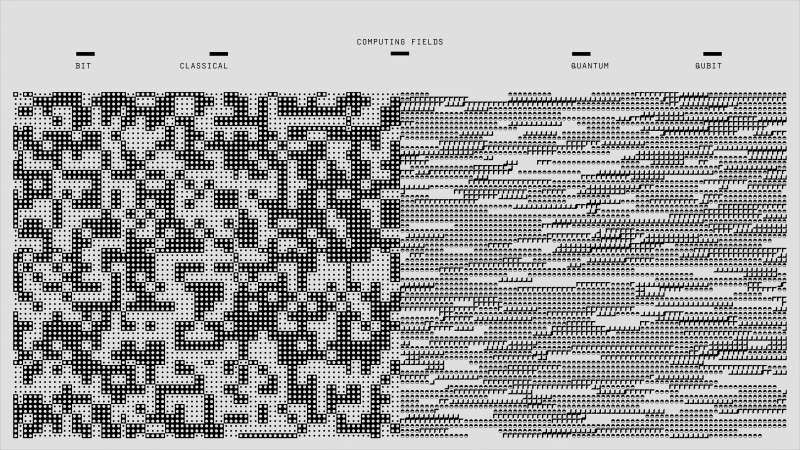HR Analytics: How Data Enhances Human Capital
Published on: April 27, 2025
In today's data-driven world, organizations are increasingly recognizing the value of data analytics in areas beyond marketing, sales, or operations. One of the most transformative applications is in Human Resources (HR), where data can be used not only to optimize internal processes but to unlock the full potential of the workforce. This approach — known as HR analytics or people analytics — enables companies to make smarter, evidence-based decisions about their most valuable asset: people.
HR analytics refers to the systematic collection, analysis, and interpretation of employee data to understand workforce trends, improve performance, and shape strategic decisions. With the right tools and mindset, companies can move from reactive to proactive HR management, identifying challenges early and continuously optimizing the employee experience.
The Shift from Intuition to Data-Driven HR
Traditionally, HR decisions were made based on experience, gut feeling, and qualitative judgment. While human intuition remains vital in people management, modern organizations are learning that data can augment insight, minimize bias, and support scalable workforce strategies.
By applying analytical methods to people data — such as turnover rates, engagement scores, productivity metrics, or learning progress — companies can answer critical questions like:
-
Why are top performers leaving?
-
Which teams are the most productive and why?
-
How can we improve diversity and inclusion?
-
What is the ROI of our training initiatives?
Core Metrics in HR Analytics
At the heart of HR analytics is a wide range of key performance indicators (KPIs) and metrics. These data points allow companies to monitor performance, set benchmarks, and track progress toward strategic goals. Some of the most common HR metrics include:
1. Turnover and Retention Rates
Understanding why employees leave and when is essential. HR analytics can segment turnover by department, tenure, or role, helping HR teams spot trends and implement targeted retention strategies.
2. Time-to-Hire and Cost-per-Hire
These metrics reflect the efficiency of the recruitment process. By analyzing them, organizations can identify bottlenecks, optimize hiring strategies, and improve candidate experience.
3. Employee Engagement and Satisfaction
Through regular surveys and pulse checks, companies can measure morale and engagement. Advanced tools use sentiment analysis and natural language processing to go deeper into feedback.
4. Absenteeism and Productivity
Tracking absence patterns and correlating them with productivity levels provides insights into team health and workload balance.
5. Learning and Development Metrics
Metrics like training completion rate, post-training performance, and skills acquisition help measure the impact of L&D programs on employee growth and organizational capability.
6. Diversity, Equity, and Inclusion (DEI) Metrics
Analyzing demographics, promotion rates, and compensation gaps by gender, ethnicity, or age helps organizations build fairer, more inclusive workplaces.
From Data to Insight: The Analytics Maturity Model
Organizations go through different stages of HR analytics maturity. Understanding this model helps set realistic expectations and goals:
1. Descriptive Analytics
Answers “what happened?”
Examples: turnover reports, average tenure, headcount dashboards.
2. Diagnostic Analytics
Answers “why did it happen?”
Examples: analyzing exit interview data to understand turnover spikes.
3. Predictive Analytics
Answers “what is likely to happen?”
Examples: forecasting attrition risk using machine learning models.
4. Prescriptive Analytics
Answers “what should we do?”
Examples: suggesting personalized learning paths based on performance data.
Most companies today operate at the descriptive or diagnostic stage. Moving toward predictive and prescriptive analytics requires more robust data infrastructure, skilled analysts, and leadership buy-in.
Real-World Use Cases of HR Analytics
1. Reducing Attrition
A tech company used predictive models to identify the top five drivers of employee resignation. They discovered that lack of manager feedback and inflexible work schedules were key issues. After adjusting these, attrition dropped by 12% in six months.
2. Improving Talent Acquisition
By analyzing candidate pipeline data, an e-commerce firm noticed that candidates referred by current employees had higher performance ratings and retention. They increased referral incentives and cut their cost-per-hire by 25%.
3. Enhancing Workforce Planning
A manufacturing company used data to model future skills gaps. The insights helped them launch targeted reskilling programs, ensuring readiness for upcoming automation changes.
4. Boosting Engagement and Inclusion
A global organization used sentiment analysis on open-text survey responses to detect lower engagement levels among remote employees. They introduced virtual wellbeing initiatives and mentorship programs, leading to a measurable rise in satisfaction scores.
Tools and Platforms Supporting HR Analytics
A growing number of tools support data collection, visualization, and analysis in the HR space. Some examples include:
-
Tableau, Power BI – widely used for creating custom dashboards.
-
Workday, SAP SuccessFactors, Oracle HCM – enterprise HR suites with built-in analytics modules.
-
Culture Amp, Peakon, Glint – platforms focused on employee engagement and feedback analysis.
-
xTimeTo (https://xtimeto.com) – a modern solution for workforce management, which tracks employee time, attendance, and productivity trends, and can be extended to analyze task efficiency and engagement across teams.
With integrations between these platforms, HR professionals can merge structured and unstructured data for deeper insights.
The Role of AI in HR Analytics
Artificial intelligence (AI) is increasingly embedded in HR analytics solutions. It powers features like:
-
Resume screening and candidate scoring (e.g., based on job fit and skills).
-
Chatbots for employee queries and feedback collection.
-
Natural language processing for analyzing open-ended responses.
-
Predictive attrition models to flag employees at risk of leaving.
-
Learning recommendations tailored to individual career goals.
While AI improves speed and scale, it also raises concerns about algorithmic bias and fairness — especially in hiring, promotions, and performance evaluation. Transparent models and human oversight remain essential.
Strategic Benefits of HR Analytics
Using data in HR decisions offers a wide range of strategic advantages:
1. Better Workforce Planning
Data helps companies anticipate hiring needs, identify internal talent for promotion, and balance workforce size with business demand.
2. Improved Employee Experience
Understanding what drives engagement and satisfaction allows organizations to create more fulfilling and inclusive workplaces.
3. Enhanced Performance Management
Objective performance data enables fair evaluations and personalized coaching — helping employees reach their potential.
4. Optimized Training Investments
Analytics ensures learning budgets go where they have the most impact, by tracking learning uptake and performance outcomes.
5. Informed DEI Initiatives
Data uncovers representation gaps, pay disparities, and cultural blind spots — essential for meaningful progress on inclusion goals.
Challenges and Considerations
Despite its benefits, implementing HR analytics involves several challenges:
-
Data Privacy and Compliance: Employee data is sensitive. Clear data governance, GDPR compliance, and transparency are non-negotiable.
-
Data Quality and Integration: Inconsistent or siloed data reduces accuracy. HR analytics requires clean, unified datasets.
-
Change Management: Managers must understand and trust the data. Building a culture of data literacy is key.
-
Ethical Use: People analytics must be guided by ethics, ensuring decisions are fair, explainable, and respectful of employee rights.
Data as a Strategic HR Asset
In an era where human capital is a primary driver of business success, HR analytics is no longer a luxury — it's a necessity. By using data to inform decisions, organizations gain a powerful edge in attracting, developing, and retaining talent. The shift toward data-informed workforce management ensures HR moves from an administrative function to a strategic force.
As tools become more accessible and analytic skills more widespread, HR professionals can unlock new levels of organizational insight — improving not only business outcomes but also the lives of the people they serve.
Ultimately, the future of HR belongs to those who embrace data, not just as numbers, but as narratives of people, potential, and progress.










